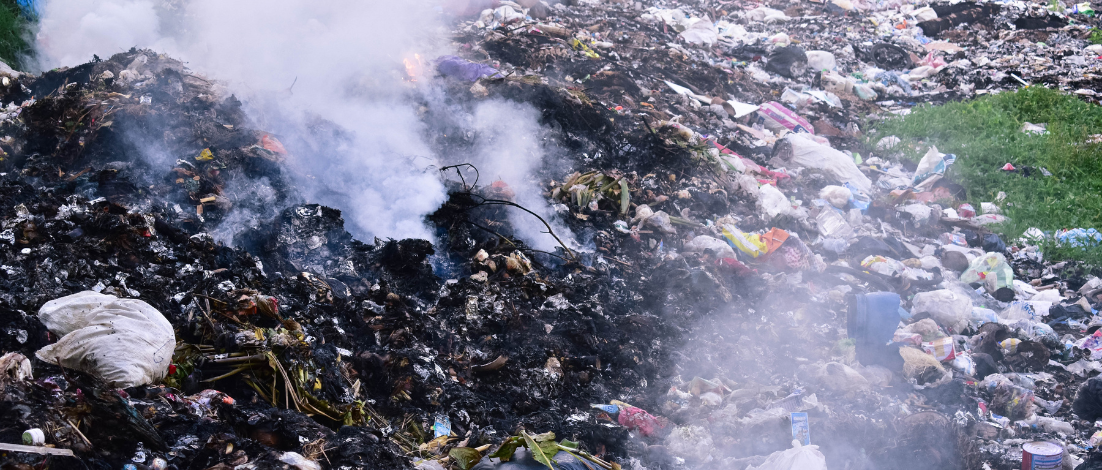Exposure to burn pits has caused severe respiratory conditions for countless veterans, significantly impacting their health and quality of life. To address this, the VA has enacted the Honoring Our Promise to Address Comprehensive Toxics (PACT) Act of 2022, expanding the presumptive conditions list for veterans who served in designated locations during specific timeframes. It’s important to note that this list continues to be updated by the VA.
The PACT Act simplifies the VA benefits application process by presuming certain qualifying respiratory conditions are service-connected. However, it’s critical that you submit thorough, well-documented medical evidence to clearly validate your diagnosis and convey your condition’s severity.
This guide outlines the medical documentation required for burn pit lung condition cases and explains how Trajector Medical can assist you in compiling complete and accurate medical evidence.
Understanding Presumptive Exposure under the PACT Act
A key component of the PACT Act is its presumptive exposure provision. If you served in a designated location during the specified timeframes, the VA assumes you were exposed to burn pits and other airborne hazards. This means you do not need to provide proof of exposure. The VA accepts that your service in these areas constitutes presumptive exposure, streamlining the first part of your claim.
Understanding Burn Pit Exposure and Presumptive Conditions
If you served in locations like Iraq, Afghanistan, Kuwait, or elsewhere within the Southwest Asia theater, you may have faced exposure to open-air burn pits, used by the military for waste disposal. These pits released toxic smoke containing hazardous particulates and carcinogens.
The PACT Act lists certain respiratory conditions as presumptively connected to burn pit exposure, eliminating the requirement for a nexus letter linking service exposure to your illness.

Covered Respiratory Conditions Under the PACT Act
Veterans with service exposure and verified diagnoses of these respiratory conditions may receive presumptive benefit consideration:
- Asthma (diagnosed after service)
- Chronic Bronchitis
- Chronic Obstructive Pulmonary Disease (COPD)
- Chronic Rhinitis
- Chronic Sinusitis
- Constrictive (obliterative) Bronchiolitis
- Emphysema
- Granulomatous Disease
- Interstitial Lung Disease (ILD)
- Pleurisy
- Pulmonary Fibrosis
- Sarcoidosis
- Respiratory cancers (lung, larynx, trachea)
- Urinary bladder cancer
- Ureter cancer
The Importance of Medical Evidence
Medical evidence is the foundation of your VA benefits application. Although the presumption implies eligibility, detailed medical documentation can help you better understand the secondary conditions that may have developed as a result.
Medical evidence should comprehensively demonstrate:
- A confirmed medical diagnosis of a listed respiratory condition
- The ongoing existence of the condition, supported by medical tests and documentation
- Clear explanation of how symptoms impact your daily functioning and employability
Comprehensive Medical Evidence Requirements
Below is what a medical evidence documentation package should ideally include:
Confirmed Diagnosis by a Medical Professional
Your documentation must clearly show a current diagnosis aligned with a listed presumptive condition. You should ideally receive diagnosis and evaluation from respiratory specialists, such as pulmonologists or internal medicine physicians, and provide:
- Pulmonary Function Tests (PFTs): FEV-1, FVC, DLCO results
- Imaging: Chest X-rays or High-Resolution CT scans showing lung damage or structural abnormalities
- Lab Work: Including tests demonstrating inflammation or specific markers related to your condition
- Additional Evaluations: Bronchoscopy or lung biopsy reports if applicable
Ongoing Symptom Documentation and Condition Progression Longitudinal medical records strengthen your medical evidence package, clearly illustrating symptom continuity, progression, and current status.
Examples include:
- Chronic symptoms such as shortness of breath, persistent cough, wheezing, or fatigue
- Treatment history and response (medications, inhalers, oxygen therapy, corticosteroids)
- Hospitalizations, emergency room records, or pulmonary rehabilitation
- Specialist referrals and reports (pulmonologists, respiratory therapists)

Functional Impact on Daily Activities and Employment
Your evidence must clearly reflect how your condition limits daily functionality and work capacity, ideally documented by your treating medical providers.
This can include:
- Medical reports noting physical limitations (difficulty walking, compromised sleep, challenges climbing stairs)
- Statements or records highlighting occupational limitations or unemployability
- Documentation from medical providers explaining the severity of functional restrictions affecting activities of daily living (ADLs)
Leveraging Lay Statements and Personal Testimony
While medical evidence is critical, lay statements enhance the credibility of your medical documentation package. Veterans, family members, or colleagues can submit statements detailing:
- Observable symptoms and their frequency
- Changes in health status or ability that aren’t fully captured in medical records
- Effects of condition on personal and family life, relationships, or emotional wellbeing
Trajector Medical’s Role: Medical Evidence Experts
Trajector Medical’s expertise in medical evidence gathering helps enable veterans like you to present a clear picture of your respiratory condition to the VA. We understand your commitment to pursuing your earned benefits, and we’re here to assist you in clearly documenting your condition’s impact and severity.
We can help you with:
- Medical evidence for related conditions. We can provide medical evidence not only for conditions directly related to burn pit and airborne hazard exposure, but also for secondary conditions that may have developed as a result.
- Help avoid inaccurate ratings. We may help you avoid inaccurate ratings from the VA by ensuring your medical evidence package is complete, accurate, and fully supports the severity of your disability.
Together, we will build the comprehensive medical evidence package you need to effectively advocate for yourself, honoring your service and ensuring the VA fully understands the extent of your health challenges.











